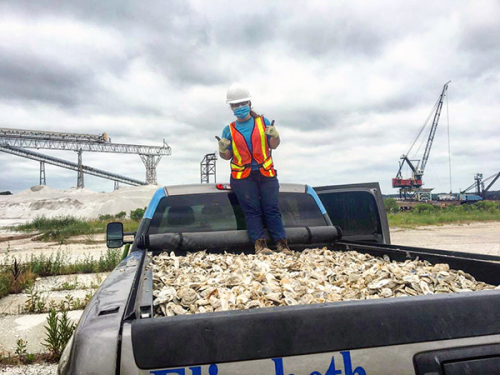Oyster Shells into the Eastern Branch of Virginia’s Elizabeth River
AUGUST 17, 2020 — If you ever wondered how oyster reefs are built, it involves a team of dedicated experts and a water cannon. Over the last month, barges have blasted 100,000 bushels of small fossilized oyster shells, called oyster hash, into the Eastern Branch of Virginia’s Elizabeth River.
Oyster hash is normally shipped abroad for use as chicken feed, but now it’s laying the foundation for a restoration project that will help the river recover from pollution.
The Elizabeth River is a working waterway that flows into the Chesapeake Bay near Portsmouth, Virginia. It is home to the Atlantic Wood Industries Superfund Site, where a wood-treating facility released hazardous waste from 1926-1992. The U.S. Navy also contributed to the pollution when it leased part of the property during World War II. Last year a $1.5 million settlement was reached to fund restoration. This work is now underway with the help of a local partner, Elizabeth River Project, which has been restoring oysters in the area for over four years.
Blasting oyster hash into the river will lay a foundation for a new generation of oysters to settle down, allowing oyster reefs to return to their historic habitat. When all is said and done, a total of 20 acres of oyster reefs will be restored and the Elizabeth River will make great strides toward the Chesapeake Bay Watershed Agreement’s goals of restoring 10 tributaries by 2025.
For further information, contact Megan.Ewald@noaa.gov.
 An official website of the United States government.
An official website of the United States government.

